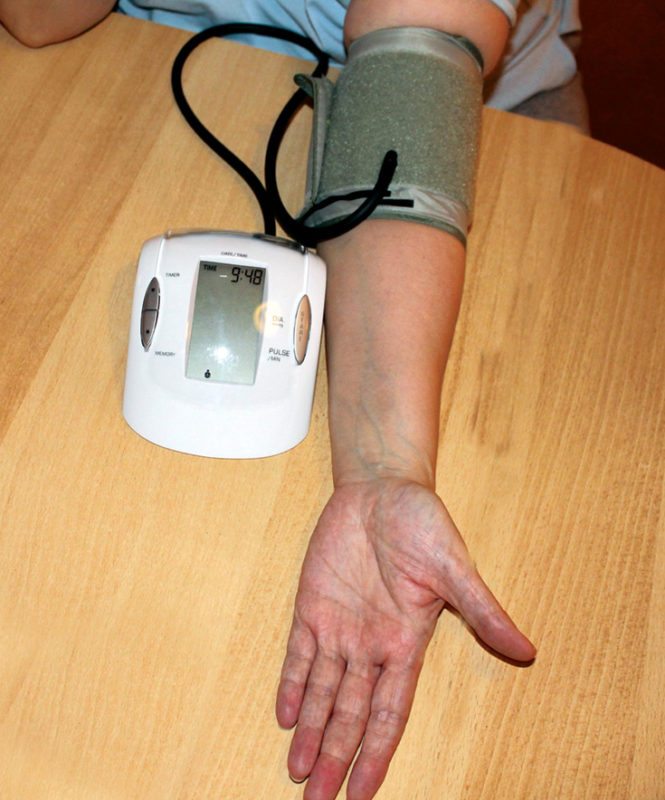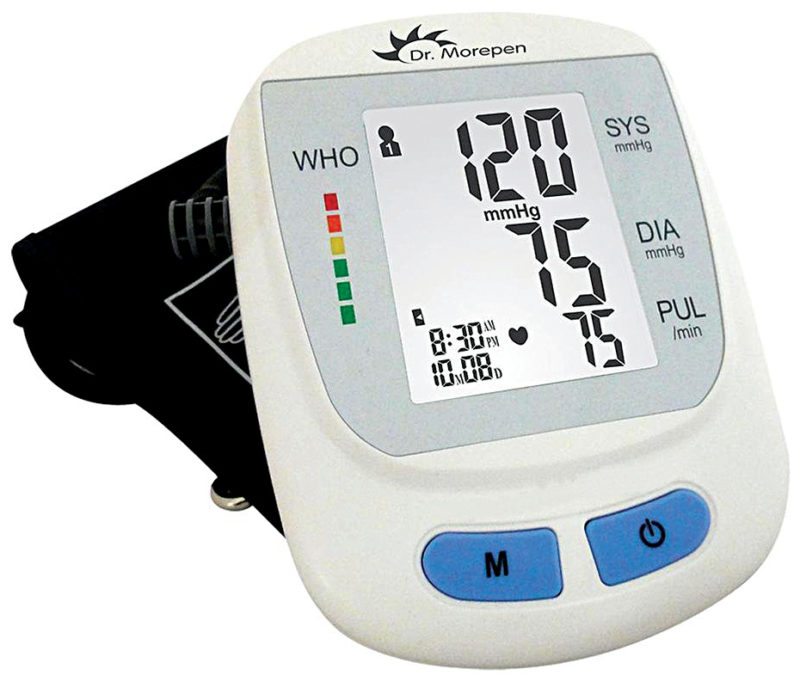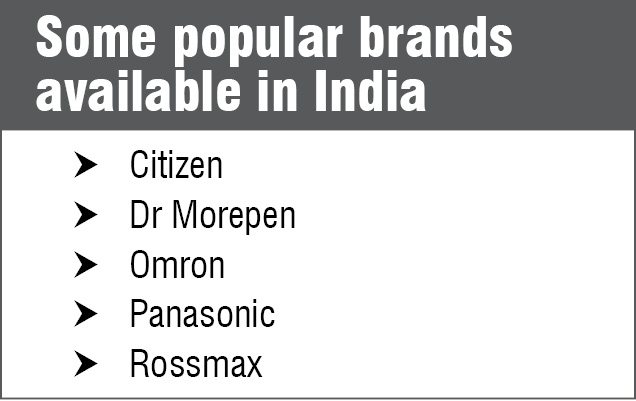Electronic blood pressure (BP) devices, also called BP monitors or digital monitors for BP, are battery-operated monitors that use a microphone to detect blood pulsing through the arteries. While you have the option of choosing between devices that measure BP at the upper arm, wrist or finger, the most-popular ones are upper-arm devices. This is because these are expected to give most-accurate and consistent results.

Buy what you can afford
BP monitors vary in price depending on the number of extra features that these have. Add-on features such as built-in memory could be helpful but might not be so necessary. At the most basic level, all you need is a clinically-validated monitor and a pen and paper to record the readings.
Hisao Masuda, MD, Omron Healthcare India, emphasises that, “Ideally, the device should be clinically validated for accuracy by a governing body such as National Accreditation Board for Testing and Calibration Laboratories (NABL).”
A quick glance at online marketplaces like Amazon and Snapdeal indicate that almost all leading brands and models are available online. Because most market-places offer discounts, there are some models that are available at a very low price online as compared to pharmacies. At the time of writing this article, most devices were available within the price range of ` 1500 to ` 4000.

Important features for selection
Given below is a checklist of features you may want to review while selecting the device for you.
Cuff size. Make sure you have the right cuff size. An upper-arm BP monitor would come with a cuff that you need to wrap around your arm. If you use a cuff that is the wrong size for you, BP reading will be incorrect. Measure around your upper arm at the midpoint between your shoulder and elbow, and choose your cuff size from the chart given in the table.
Cuff inflation. Recent devices come with a feature where once the cuff is wrapped around the arm, it inflates automatically. But there are devices for which you have to inflate the cuff manually. For users who have to measure BP themselves, automatic inflation is a preferable choice.
Irregular heartbeat monitor. Many BP monitors can also detect irregular heartbeat while calculating BP and send alerts regarding those to the users.
Memory. Larger the memory, more readings can be stored in the device. This is an important feature for those who need to regularly review the history of BP readings, while consulting with their doctors.
Multi-user capability. Some machines have the capability of storing readings for more than one user. This is an extremely useful feature for households where more than one individual needs to record BP readings.
Body-movement detection. This feature allows the device to detect body movement and, more importantly, adjust the readings accordingly. It is expected to make the readings more accurate.
Sphygmomanometer display. Some devices display traditional BP measurements by displaying a sphygmomanometer-like bar, which is useful for traditional doctors who like to get a feel of the old time.

Batteries. BP-measurement devices are typically battery-powered. However, some have rechargeable batteries. In terms of convenience and long-term cost-benefits, you may want a model with rechargeable batteries.
LCD display size. All brochures list this feature. Though not a critical one, it is obvious—the larger the display, the better and bigger is the information displayed.
Weight. This is an important feature for those who carry their BP device with them wherever they go.

What next
Some of the latest BP devices being launched are harnessing the power of mobile devices. These come bundled with apps, which get downloaded on the mobile device.
The devices focus on measuring BP and transmitting data to the mobile device. Their apps use the power of the mobile device to display the information and provide interesting reports and analytics.
Then there are products that focus on better-designed cuffs to reduce errors because of their incorrect placement of cuffs.
However, this product category now faces competition in the form of wearable devices. Latest health-focused wearable devices include smartwatches that have BP monitors. While these do not offer accuracy comparable to a standard BP device, as of now, it is to be seen how their growing popularity may affect demand for traditional BP-monitoring devices.









